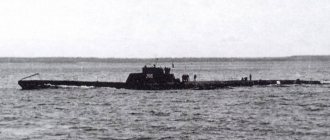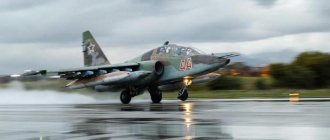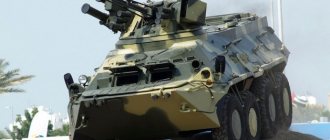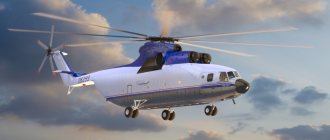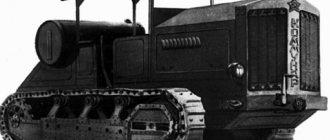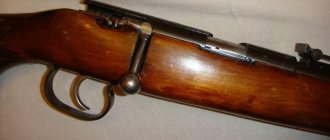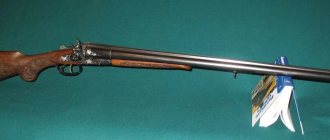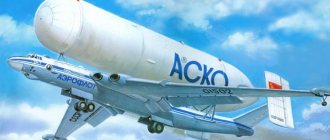This term has other meanings, see Stalinets.
| Stalinets-2 | |
| Manufacturer | USSR USSR, Chelyabinsk Tractor Plant |
| Year of production | 1938-1942 (1275 pieces)[1] |
| Body type | army type body[2] |
| Drive unit | crawler |
| Weight | 11940 kg |
| Load capacity | 1500 kg |
| Capacity | 2+8 |
| Length × Width × Height | 4674×244×2756 mm |
| Ground clearance | 462 mm |
| Fordable | 0.8 m |
| engine's type | diesel |
| Engine model | MT-17[1] |
| Number of cylinders | 4 |
| Volume | 15465 cm³ |
| Engine power | 77 kW (104.8 hp) |
| Revolutions per minute | 1100 |
| Power density | 8.75 hp/t |
| Fuel grade | diesel fuel, a mixture of autol with gasoline and kerosene |
| Fuel tank capacity | 222 (3 tanks) l |
| Cooling type | water |
| Specific ground pressure | 0.768 kg/sq.cm |
"Stalinets-2" (C-2)
- medium artillery tractor. Of the 1,275 units produced, only 669 were used in the active army[3].
Notes
- ↑ 1 2 3 Prochko E.
Transport tractor “Stalinets-2” // [modelist-konstruktor.ru/bk/0203 Artillery tractors of the Red Army]. — Armor collection. - M., 2002. - T. 1. - P. 14-18. — 36 s. - Alexander Ioffe.
[chtz-uraltrac.ru/news/topics/233.php The ubiquitous “weave”] (Russian). chtz-uraltrac.ru (January 2007). — The MT-17 diesel engine had a power of 105 hp. at 1100 rpm. Retrieved August 8, 2013. [www.webcitation.org/6IvQDJvab Archived from the original on August 17, 2013]. - [ibryansk.ru/news/other/2011/01/27/stalinec-vytaschili.11309.html “Stalinist” was pulled out!] (Russian). iBryansk.ru (January 27, 2011). — The ST-2 tractor-tractor is a rather rare find; only 669 of them were used in the active army. Retrieved August 8, 2013. [www.webcitation.org/6IvQRxIMC Archived from the original on August 17, 2013].
- [chtz-uraltrac.ru/news/topics/446.php “Stalinist” from 41st] (Russian). chtz-uraltrac.ru (October 2008). — The MT-17 diesel engine had a power of 105 hp. at 1100 rpm. Retrieved August 8, 2013. [www.webcitation.org/6IvQJoHyZ Archived from the original on August 17, 2013].
In 1935, it was decided to convert ChTZ tractors to diesel engines; in the same year, the first M-17 diesel engine was assembled, designed so that it could be installed on a S-60 type tractor with minimal modifications to the latter. In April - June 1937, the plant's assembly line was re-equipped, and on June 20, serial production of the new S-65 tractor, the first in our country with a diesel engine, began. The 4-stroke 4-cylinder diesel engine M-17 had a power of 75 hp. at a crankshaft speed of 850 rpm. Engine displacement 13.53 liters. Cylinder diameter 145 mm, piston stroke 205 mm. The diesel engine was started using a two-cylinder four-stroke gasoline starting engine V-20 with a power of 18 hp. The “launcher” itself was wound up using a handle mounted below on the frontal sheet of the hood. Otherwise, the “launcher” is very similar to those that are still on ChTZ tractors today. The ignition system is from a magneto. The number of gears in the box remained the same as in the S-60. Maximum traction force is 4200 kgf, maximum speed is 6.5 km/h. Tractor weight 10800 kg.
S-65 tractors have gained wide recognition in agriculture, on construction sites, and in the army, where they were used as tractors for heavy guns.
Speaking about pre-war tractor production at ChTZ, one cannot fail to mention the S 2 transport tractor, the production of which began in 1940. An army-type body was installed behind the forward-facing cab. The MT-17 diesel had a power of 105 hp. at 1100 rpm.
For the period 1937 - 1941. 37,182 S-65 tractors were manufactured in 1938 - 1941. - 7365 SG-65 tractors, and in 1940 - 1941. — 23+1275 S-2 tractors. “Stalinists” of all models made a significant contribution to the Great Victory.
After the Great Patriotic War, tractor manufacturing at the plant was resumed. The new S-80 tractor was much more advanced than its pre-war predecessors. Essentially it was a new car.
Stalinets-2
Using the new engine, the NATI design team developed the Stalinets-2 heavy transport tractor. The layout of the new tractor was made similar to the STZ-5 tractor, with the engine moved inside the cabin mounted on a semi-frame, the rear part of which was attached to the main gear. The four-cylinder MT-17 engine with a power of 115 horsepower was combined with a four-speed tractor-type gearbox - in a common crankcase with a rear axle, which was borrowed from the S-65 tractor. The MT-17 engine - a relatively low-speed four-cylinder, four-stroke diesel engine with a tractor layout (Caterpillar type) - was distinguished by high reliability, durability and efficiency, although it had increased weight (2200 kg) and dimensions, that is, it was clearly a “non-transport” type. The gear drives of all auxiliary units worked flawlessly. An exhaust muffler was added and the intake-exhaust manifold was changed. The air purifier was installed in the cabin. The MT-17 could confidently operate not only on diesel fuel, but also on a mixture of autol with gasoline and kerosene, which was often used in front-line conditions. It started easily even at - 30 °C from a special starting gasoline engine V-20 with a power of 20 hp, which in turn had manual and automobile electric starters - During a cold start, it was significant that the V-20 simultaneously with cranking the diesel engine through a two-stage the gearbox warmed up its cooling system and suction tract.
Three fuel tanks contained a total of 220 liters of fuel. The maximum speed of the tractor with a curb weight of 12 tons was 27 km/h.
The chassis with six road wheels had a spring-balance suspension (like the T-26 tank) and a ridge drive sprocket with a fine-linked caterpillar.
Between the engine and the gearbox, under the platform, there was a winch designed by ChTZ with a traction force of 10,000 kgf, with a 30-meter cable with a diameter of 20 mm being issued back through a guide bracket. The winch is driven from the lower driven shaft of the gearbox through worm and helical gearboxes with internal gearing. The winch operated with the side clutches turned off.
The closed two-seater cabin, borrowed from the ZiS-5 truck, has been expanded. The cargo platform with an area of 5.05 m2 with two folding seats on the sides could be covered with an awning and could accommodate eight people. The load capacity of the rear platform was 1.5 tons, the weight of the towed trailer was up to 19 tons.
After testing the new tractor, in 1938 the first pilot batch was manufactured at ChTZ according to NATI drawings. And already in August 1939, two Stalinets-2 tractors made a test run from Chelyabinsk to Moscow, covering almost two thousand kilometers in twelve days.
At the end of 1939, these vehicles underwent a series of tests at the tank training ground in Kubinka, according to the results of which the Stalinets-2 had to be seriously improved. The military was not satisfied with the reliability and ease of use of the tractor in operation and maintenance, although the dynamic characteristics were considered satisfactory.
In 1940, the Stalinets-2 tractor was maximally unified with the ChTZ S-65 tractor in order to produce them on the same conveyor, and mass production began in the fall. By the end of the year, 23 units were delivered to the army with difficulty. In 1941, 1235 tractors were already produced (according to other sources - 1179), and in the 2nd half of the year - 859. With the beginning of the war, the pace of their assembly reached six to nine vehicles per day. However, in November, due to ChTZ switching to the production of heavy tanks, tractor manufacturing there was completely stopped (nine more vehicles were made in December). The last five S-2 tractors, out of 1,275 produced, were delivered already in 1942. S-2s hit all fronts, especially many on the South-Western. They towed guns from 85-mm anti-aircraft to medium and heavy artillery systems in corps artillery regiments, as well as 203-mm howitzers of the 1931 model and 280-mm mortars of the 1939 model. They were effective in evacuating light and medium tanks. On September 1, 1942, 892 S-2 tractors were in service in the army. Given the general shortage of tractors, they were saved.
Despite the absence of factory supplies of spare parts since 1942 (as well as for the S-65), the S-2 tractors were no worse than other transport tractors in the army until the end of the war and were used to a limited extent in artillery mechanization until the early 1950s.
Tactical and technical characteristics of the transport tractor "Stalinets-2" (S-2)
Weight in running order without load, kg: experimental 11787, serial 11940
Platform load capacity, kg 1500
Weight of towed trailer, kg 10000, with overload 19000
Seats in the cabin 2, in the body for sitting 8
Dimensions, mm: length 4674, width 2440, cabin height (without load) 2756, with awning 3065
Track roller base, mm 2025
Full base (by sprockets), mm 2988 - 3055
Track (along the middle of the tracks), mm 1823
Track width, mm 420
Ground clearance, mm 462.5
Average specific ground pressure with crew and cargo on the platform, kgf/cm? 0.768
Engine power, hp:
nominal at rotation speed, 1100 rpm 105
maximum at rotation speed 1350 rpm 115
Maximum speed on the highway, km/h 26.5
Cruising range on the highway with a trailer, km up to 183
Limit climbability on hard ground with a load without a trailer, degrees 24 - 25
Links
- [chtz-uraltrac.ru/news/topics/446.php “Stalinist” from 41st] (Russian). chtz-uraltrac.ru (October 2008). — The MT-17 diesel engine had a power of 105 hp. at 1100 rpm. Retrieved August 8, 2013. [www.webcitation.org/6IvQJoHyZ Archived from the original on August 17, 2013].
- [ibryansk.ru/news/other/2011/01/27/stalinec-vytaschili.11309.html “Stalinist” was pulled out!] (Russian). iBryansk.ru (January 27, 2011). — The ST-2 tractor-tractor is a rather rare find; only 669 of them were used in the active army. Retrieved August 8, 2013. [www.webcitation.org/6IvQRxIMC Archived from the original on August 17, 2013].
| This is a draft article about military equipment. You can help the project by adding to it. |
Excerpt characterizing Stalinets-2
- Why have you never been to Annette? – the little princess asked Anatole. “And I know, I know,” she said with a wink, “your brother Ippolit told me about your affairs.” - ABOUT! “She shook her finger at him. - Even in Paris I know your pranks! - And he, Hippolytus, didn’t tell you? - said Prince Vasily (turning to his son and grabbing the princess by the hand, as if she wanted to run away, and he barely had time to hold her), - but he didn’t tell you how he himself, Hippolyte, wasted away for the dear princess and how she le mettait a la porte? [kicked him out of the house?] – Oh! C'est la perle des femmes, princesse! [Oh! this is a pearl of women, princess!] - he turned to the princess. For her part, m lle Bourienne did not miss the opportunity, when she heard the word Paris, to also enter into a general conversation of memories. She allowed herself to ask how long ago Anatole left Paris, and how he liked this city. Anatole very willingly answered the Frenchwoman and, smiling, looking at her, talked to her about her fatherland. Having seen the pretty Bourienne, Anatole decided that here, in Bald Mountains, it would not be boring. “Very pretty! - he thought, looking at her, - this demoiselle de compagn is very pretty. [companion.] I hope she will take it with her when she marries me,” he thought, “la petite est gentille.” [baby – sweet.] The old prince was slowly getting dressed in his office, frowning and thinking about what he should do. The arrival of these guests angered him. “What do I need Prince Vasily and his son? Prince Vasily is a braggart, empty, well, he must be a good son,” he grumbled to himself. He was angry that the arrival of these guests raised in his soul an unresolved, constantly suppressed question - a question about which the old prince always deceived himself. The question was whether he would ever decide to part with Princess Marya and give her to her husband. The prince never directly decided to ask himself this question, knowing in advance that he would answer fairly, and justice contradicted more than a feeling, but the entire possibility of his life. Life without Princess Marya was unthinkable for Prince Nikolai Andreevich, despite the fact that he seemed to value her little. “And why should she get married? - he thought, - probably to be unhappy. There's Lisa behind Andrey (it seems hard to find a better husband now), but is she happy with her fate? And who will take her out of love? Dull, awkward. They'll take you for your connections, for your wealth. And don’t they live in girls? Even happier!” This is what Prince Nikolai Andreevich thought as he got dressed, and at the same time, the question that was being postponed demanded an immediate solution. Prince Vasily brought his son, obviously with the intention of making an offer and, probably, today or tomorrow he will demand a direct answer. The name and position in the world are decent. “Well, I’m not against it,” the prince said to himself, “but let him be worth it. This is what we will see.” “We’ll see about that,” he said out loud. - We'll see about that. And he, as always, entered the living room with cheerful steps, quickly looked around everyone, noticed the change in the little princess’s dress, and Bourienne’s ribbon, and Princess Marya’s ugly hairstyle, and the smiles of Bourienne and Anatole, and the loneliness of his princess in the general conversation. “I got out like a fool! – he thought, looking angrily at his daughter. “There’s no shame: but he doesn’t even want to know her!” He approached Prince Vasily. - Well, hello, hello; glad to see you. “For my dear friend, seven miles is not a suburb,” Prince Vasily spoke, as always, quickly, self-confidently and familiarly. - Here is my second one, please love and favor. Prince Nikolai Andreevich looked at Anatoly. - Well done, well done! - he said, - well, go ahead and kiss him, - and he offered him his cheek. Anatole kissed the old man and looked at him curiously and completely calmly, waiting to see if the eccentric thing his father had promised would soon happen from him. Prince Nikolai Andreevich sat down in his usual place in the corner of the sofa, pulled an armchair towards him for Prince Vasily, pointed to it and began asking about political affairs and news. He listened as if with attention to Prince Vasily’s story, but constantly glanced at Princess Marya.
Homemade tractors and all-terrain vehicles
“Stalinets-60” is the first tractor model mass-produced at the Chelyabinsk Tractor Plant from 1933 to 1937.
In the 30s in the USSR, the problem of agricultural mechanization was acute. By that time, several types of tractors were already being produced in the country, but their number was scanty, besides, wheeled tractors were inferior in cross-country ability to caterpillar tractors, and could not work during times of mud. The tracked “Kommunards”, the production of which was launched in Kharkov, were used mostly in logging and in the construction of railways.
In 1929, during the consideration of the plan for the fifth “five-year plan”, a decision was made to build another tractor plant. They decided to build it in Chelyabinsk, since further agricultural reform implied the cultivation of grain mainly in Kazakhstan, the Volga region, and the Urals; accordingly, the construction of a plant that produced tractors not far from the places of their further use was a logical decision.
The new tractor was based on the American Caterpillar Sixty tractor, with a 60 hp engine.
A caterpillar vehicle that met all the basic requirements for the future first-born of ChTZ.
One of the important requirements was the suitability of the tractor for mass production on a conveyor belt; for these reasons, perhaps, the choice fell on Caterpillar, because the design of the tractor was simple.
The Chelyabinsk plant was designed for a production capacity of up to 30 thousand tractors per year, and it was desirable to put on the conveyor a design that had already been tested by time, but at the same time not technically outdated.
The Caterpillar Sixty was suitable in most respects, but it was not possible to put it on the conveyor in its pure form. It was necessary to carry out work to convert the machine from inches to the metric system, at the same time to select Soviet analogues of steel suitable for the manufacture of the machine, and in the course of this process, the designers made a number of changes to the design, improving it in some places, simplifying it in others and making it more repairable under our conditions.
The work on adapting the American tractor was carried out in record time - it took a team of engineers only forty days. They worked around the clock.
In 1930, Kazimir Lovin, the construction manager of ChTZ and 40 Soviet engineers went on a business trip to Detroit, USA, where, together with American specialists from Caterpillar, they were designing a ChTZ production line.
Construction of the plant begins on August 10, and the pilot workshop begins operating in November of this year. At the beginning of 1931, the first S-60 tractor left its gates. "Stalinist".
While the main plant was being built, an experimental batch of tractors was being tested, minor changes were made to the design, and on June 1, 1933, ChTZ officially began mass production of the most popular Soviet tracked tractor at that time, which could soon be found in many parts of the country.
The S-60 was highly appreciated outside the USSR; in 1937, at an international exhibition in Paris, it received the Grand Prix. But the world learned about these tractors earlier, in January 1936. At the end of 1935, in the waters of the Lena, ice bound transports carrying various cargoes to Yakutia, mainly food. It was decided to transport cargo from ships frozen in ice... using tractors. And they did not disappoint, having traveled more than 2 thousand kilometers in northern conditions, they brought the goods. At the beginning of 1936, several C-60s loaded with food passed through the Pamir passes, delivering food to the village of Mugrab, which was in distress due to bad weather.
The “Stalinets” S-60 was produced from 1933 to 1937; a total of 69,261 tractors of this model were produced.
The tractor's power was 60 hp, the engine was four-cylinder, water-cooled carburetor, ran on naphtha, this is a type of “heavy” gasoline, but the engine had to be started on regular gasoline, the supply of which was in a separate small tank. All cylinders were separate, the engine was overhead valve. The clutch is single-disc dry, the gearbox is three-speed, it could move forward at a speed of 3 to 6 km/h, backward – 2.2 km/h. There was a power take-off pulley for stationary installations.
Rather, the S-60 was replaced by the updated S-65 model with a more economical diesel engine.
Similar homemade products on our website:
- DIY tractor made from GAZ-53
- Tractor T-4 “Altaets”: characteristics, photos and description
- Mini tractor with UD-25 engine
- DIY tractor
- Homemade mini tractor based on ZAZ gearbox
- Homemade tractor with D-144 engine
- Homemade mini tractor from UAZ-469 parts
- DIY tractor
- Homemade mini tractor with UD-2 engine: photo and description
- Homemade tractor based on GAZ-66
- Mini tractor fracture homemade
- DIY walk-behind tractor with UD-15 engine
